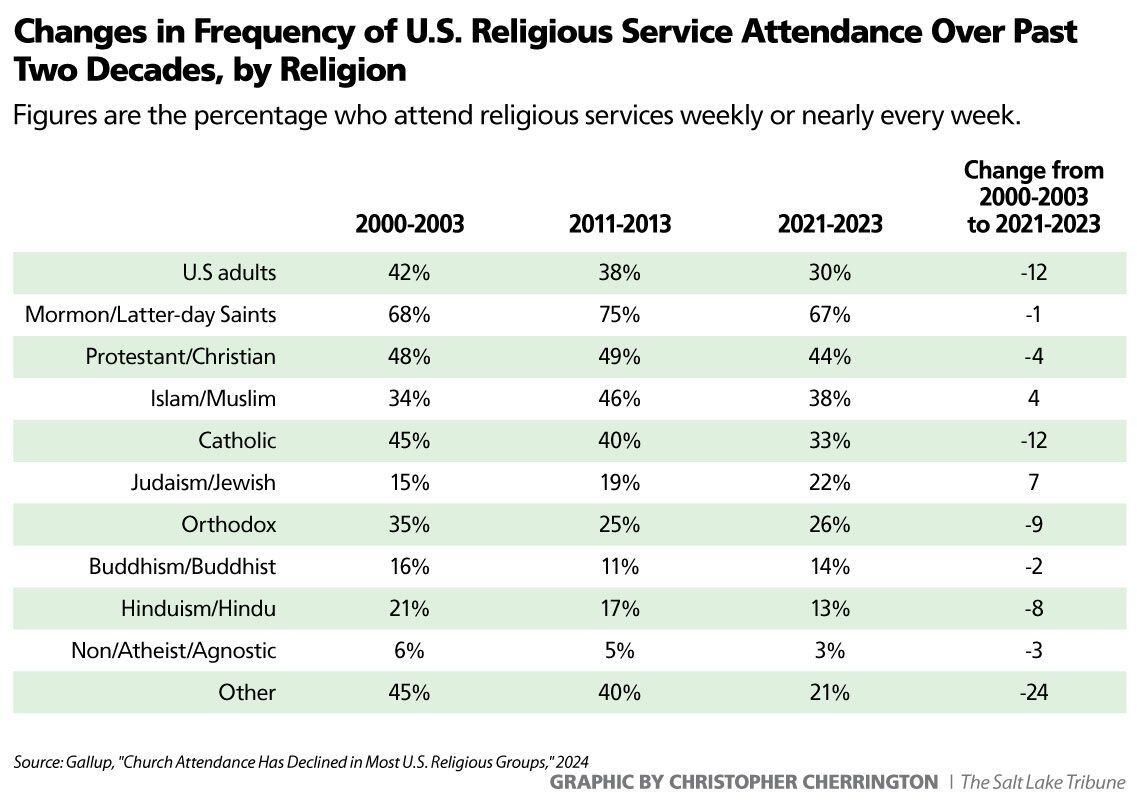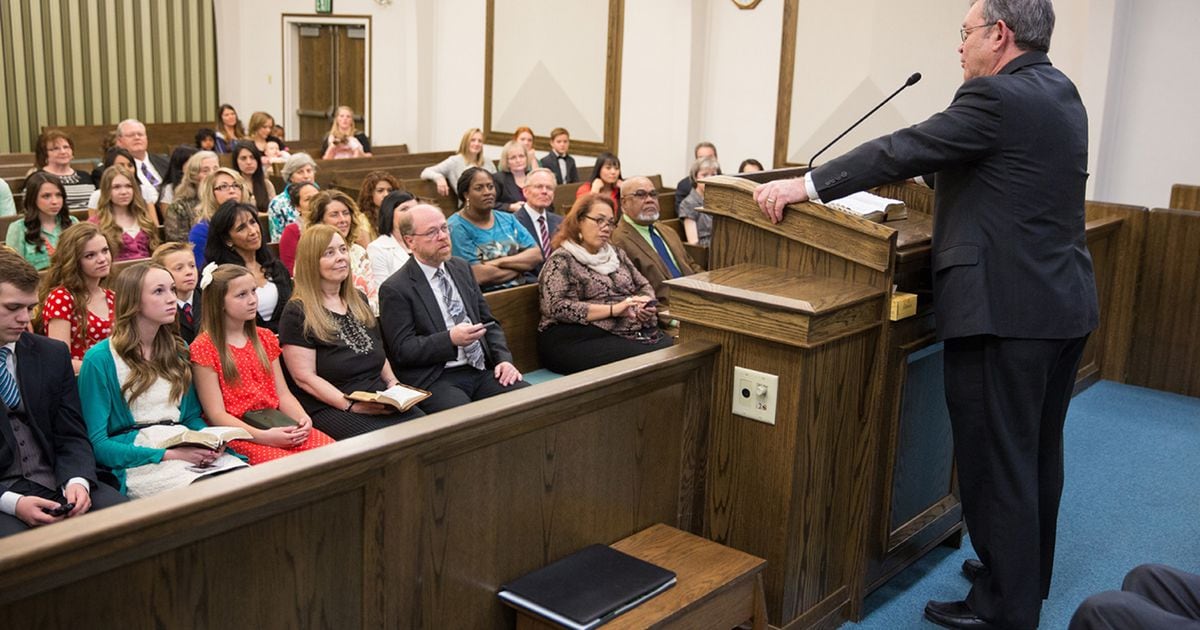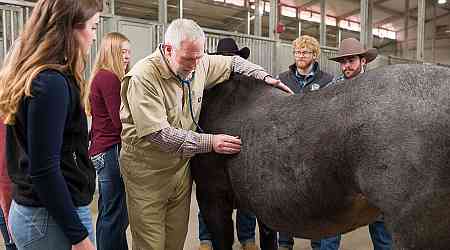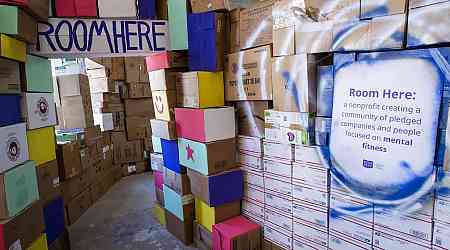Here’s the church. Here’s the steeple. Open the doors and see … only handfuls of people.
There was a time, in the late 1950s, when half of Americans regularly attended church, the highest percentage in U.S. history. Today, according to a new Gallup report, that number clocks in at 3 in 10.
Based on tens of thousands of phone surveys conducted over the past three decades, the report makes one thing as clear as a Wasatch Mountain spring: Latter-day Saints are not to blame for empty pews.

According to the study, which did not provide a margin of error, 67% of members of The Church of Jesus Christ of Latter-day Saints living in the United States went to church at least most weeks between 2021 and 2023.
This number, based on more than 600 Latter-day Saint respondents during the two-year period, matches a new study from the B.H. Roberts Foundation, which put the activity rate for those within the “Mormon Corridor” at 71% and 65% for those without.
Research published in 2014 and 2016 put the overall rate in the United States at 77% and 74%, respectively.
For regular Latter-day Saint churchgoers familiar with their congregations’ rolls, these lofty percentages might raise a few eyebrows.
And, in fact, there is one critical weakness shared by all of these studies. All four rely on self-reporting. And, as sociologists will tell anyone who will listen, what people say they do and what they actually do, don’t always line up.
Sure enough, a new report using cellphone data harvested from 2.1 million Americans from April 2019 to the pre-pandemic month of February 2020, indicates the true percentage of Latter-day Saints who attend regularly may be closer to 15% — a jaw-bruising 52 percentage points lower than the number who reported doing so to Gallup just a year or two later.
Latter-day Saints are not the only ones who appear to be grading themselves on a Mount Timpanogos-size curve, either. The same cellphone study put the overall activity rate of U.S. adults at 5% for that same 2019 to 2020 stretch, a sixth of what Gallup measured for 2021 to 2023.
A constant does emerge from all this disparate data, however. No matter how you slice it, Latter-day Saints smoke the competition in terms of turnout.
Rewind the clock 10 years and that was still the case, according to Gallup, which found that 75% of Latter-day Saints attended church regularly from 2011 to 2013, compared to 38% nationwide. The faith also held the top spot for 2000 to 2003, when 68% of Latter-day Saints attended worship services regularly — compared to 42% of all U.S. adults.
Only two groups — Jewish and Muslim Americans — saw their activity rates increase during the study’s 20-year span, both by single digits.

So what has America’s congregations deflating like a punctured balloon?
According to the Gallup study’s authors, the major driver has to do with the growth in the number of “nones,” Americans with no religious affiliation — 9% in 2000 to 2003 versus 21% in 2021 to 2023. Younger and more politically liberal, this fast-growing cohort overwhelmingly opts out of community worship, if not necessarily a belief in a higher power.
Other studies, meanwhile, suggest COVID-19 likely served as a minor accelerant to preexisting downward trends, with many believers skipping rolling out of bed for weekend services in the wake of the pandemic.


























